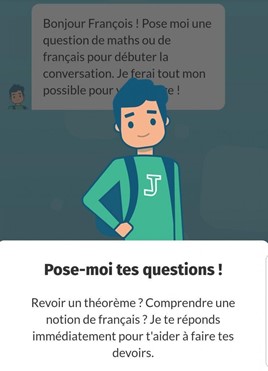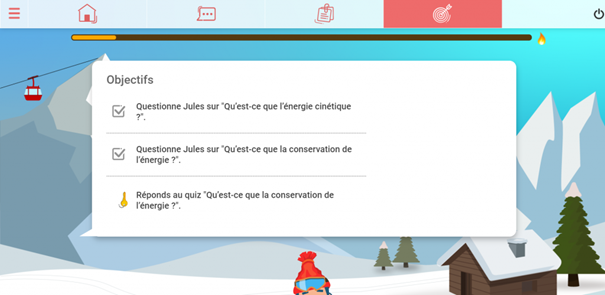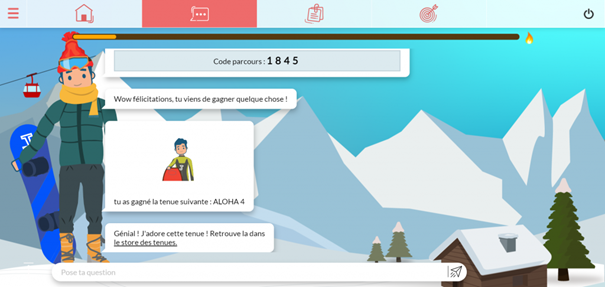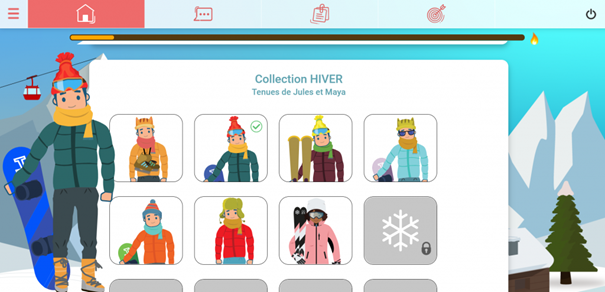
Pixelraise partnered up with dydu to implement a gamification layer to the Jules chatbot, a homework helper for secondary school students, deployed by the CNED with dydu’s solution. Moezz Sedkaoui, founder and managing director of Pixelraise, looks back at this collaboration and explains the advantages and mechanics of a chatbot-gamification association.
Can you describe your company and role in a few words?
Pixelraise is an IT consultancy firm and web and mobile developer, with an entity in France and Switzerland (WebGoeSon). Our 25 employees develop custom IT solutions, e-commerce sites, native and cross platform mobile apps, and CMS-based sites. Pixelraise has a large client portfolio: Merck, EMS Medical, Produits Dentaires, Carglass Suisse, the French Ministry of Education, Sword, Hermes, Plezi, etc.
How was the Pixelraise and dydu partnership born?
Dydu put out a call for tender looking for a partner that could quickly gain the skills required for their chatbot technology and, above all, enhance the existing Jules chatbot app through gamification. A shared contact brought the decision makers from both companies together, giving rise to a great collaboration and successful project over a 10 month period.

Can you describe the role Pixelraise played in the CNED Jules project?
Pixelraise was responsible for developing the gamification layer (excluding UX and design), with 3 main objectives:
- develop digital uses for the “Devoirs faits” programme (personalised support and help with homework for secondary school students)
- reward effort with prizes, to encourage students to use the app
- motivate users to play regularly
What does the Jules chatbot currently offer in terms of gamification?
The gameplay we developed enables the user to win flames and gifts. By earning flames, the user can move to the next level, and is rewarded with a gift at every level. These gifts include outfits for the user’s avatar or backgrounds to personalise the environment.



What were the different steps to implement gamification in the chatbot? How does this combination work technically?
The first step was to understand and perfectly master the dydu component (Assembly.js), the chatbot’s engine that contains the knowledge base. Then, we developed all the APIs to interact with user actions, to reward and encourage them to learn while playing. Technically, the interactions between the quizzes and dydu’s chatbot are done via a function call in Js, using JavaScript Window Option. Finally, the app authentication is based on an API managing the creation of user accounts (student and teacher profiles – web and mobile) and the connection.
What are the main game mechanics and keys to a successful game or challenge?
Gameplay is the first aspect, including playability and the rules of the game. The player should be immediately immersed in the action with an adapted design. The second important aspect is finding the right balance between constraints and possible actions; too many rules make the game difficult to play and too much freedom leads users to drop out, without any retention. The last aspect is the pleasure or fun of playing, based on innovation, whether technical, design or narrative.
The keys to a successful game can be summed up in 5 points:
- choose a unique gameplay; use well-known game mechanics that the majority of gamers are familiar with, and add customisation to make the game unique,
- opt for an innovative design; UX is very important, and it is essential to carefully design the game so as to offer a unique and coherent experience from the very first session. The game should be fun. If the user’s first impression is negative, there is little chance they will play again (and they will probably uninstall the app),
- work on retention; for example, create addiction with random rewards,
- optimise the response time; make sure that your game takes no more than 2.5 seconds to load, in order to reduce your abandonment / unsubscribe rate,
- market the game with a suitable budget to make it visible among the many games available, in a very competitive market.
What other web and mobile developments have you carried out for the Jules project? (application, authentication interfaces, etc.)
We developed an external back-office on the Java / Springboot / BD Postgress / J2ee stack, in order to manage certain items such as the flames, quizzes, levels, outfits, backgrounds, etc. It also contains user information.
Do you think there will be other opportunities for dydu and Pixelraise to work together, beyond the Jules project?
Absolutely, we are complementary and perfectly capable of integrating dydu’s chatbot solutions. We recommend dydu to our clients as an expert partner in chatbot solutions.
In your opinion, how is UX design evolving in web projects?
Over the past 10 years, the user experience (UX Design) has taken a new direction, and users are now at the heart of projects (User Centric). UX design is not just about the design aspect of the interface. It also involves a reflection on the standard user journey in order to meet user expectations. The science behind the user experience is central to all web projects because more then 7 out of 10 internet users will not return to a website if their first experience does not live up to their expectations.
P.S.: by the way, I’ll soon be announcing the release of our UX addict websites 😃
How do you think Artificial Intelligence will impact UX?
I believe that artificial intelligence will revolutionise the user experience. Artificial intelligence and user experience are closely linked in today’s world, where we are now facing a turning point in a new era including big data, voice search, chatbots, etc.
Real AI allows a degree of customisation that is hard to find on other more traditional channels. Within the context of voice search in particular, AI makes it possible to introduce greater personalisation, fluidity, and intuitiveness, all of which greatly benefit the UX. It is important that UX designers offer three options at the most per interaction, because the user will struggle to retain more than three.





